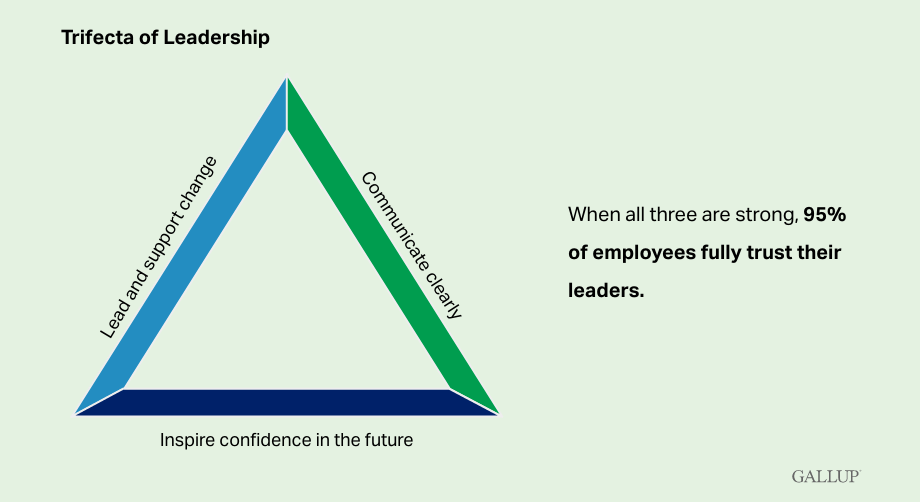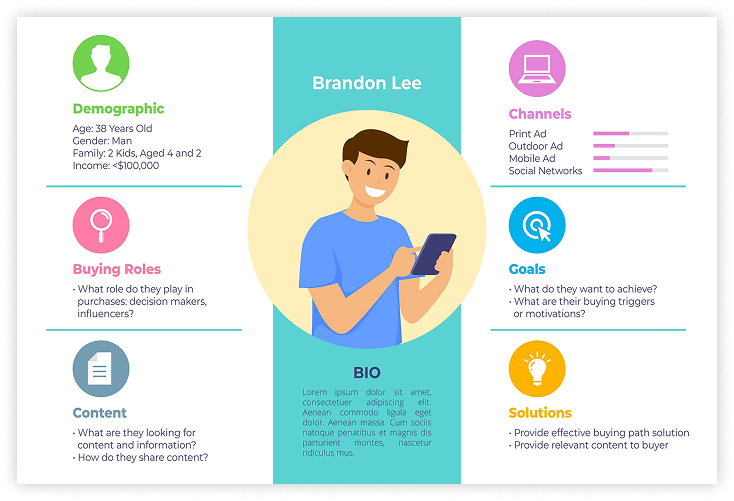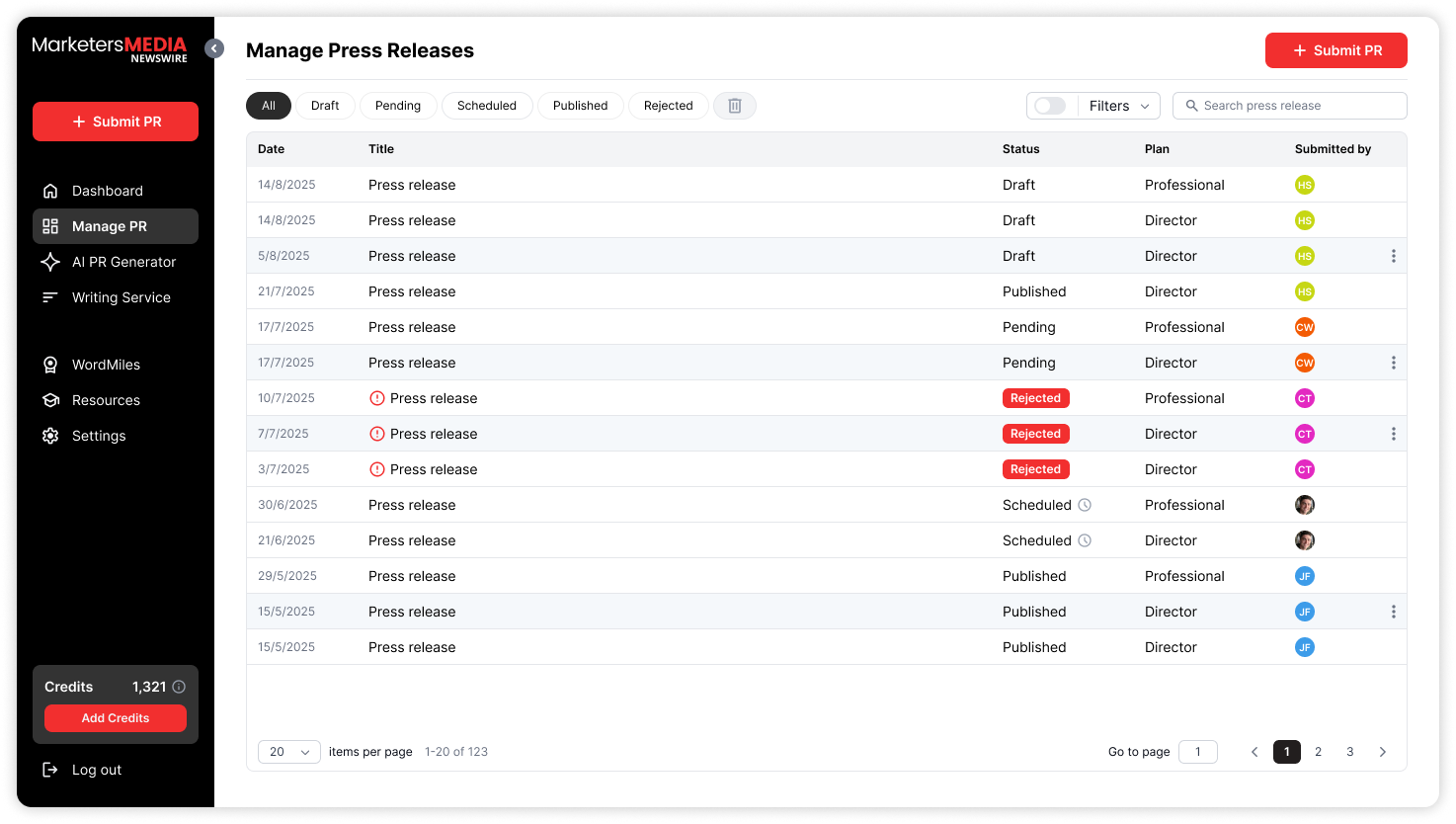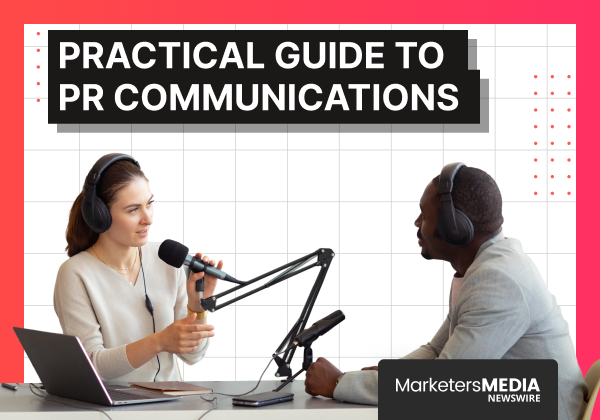Table of Content
Corporate communication shapes how the world sees your company.
It's the bridge between your organization and everyone who matters—employees, customers, investors, and the public.
But it's more than just sending emails or posting on social media. Effective corporate communication builds trust, drives engagement, and protects your reputation when things go wrong.
What is Corporate Communications
Corporate communications is simply how your company talks to people—both inside and outside your organization.
It can be the CEO’s monthly update, a press release about a new product, or a quick reply on social media.
Think of it as your company's voice. Every email, social media post, and press conference is a chance to show who you are and what you stand for.
Corporate communication rests on three main pillars:
- management communication (how leaders talk to teams),
- marketing communication (how you reach customers), and
- organizational communication (how information flows throughout your company).
When these pillars work together, your company speaks with one clear voice.
That voice can show up in many ways: through written reports and website copy, spoken updates like meetings or interviews, or visual elements such as infographics and branding.
Together, they ensure your message is clear, consistent, and aligned with your values.
Importance of Corporate Communications
Building Trust and Reputation
Your reputation hinges on how well you communicate.
Think about it: when was the last time you trusted a company that gave you confusing or contradictory information?
Same goes to customers, investors, and stakeholders; they trust companies that provide accurate, transparent information.
And this trust translates directly into business results: higher customer loyalty, better partnerships, and stronger investor confidence.
Gallup research backs this up: clear communication is one of the top three things that makes 95% of employees trust their leaders completely. That level of trust creates stronger teams and better business results.

Ensuring Message Consistency
Without coordinated communication, your marketing team might be telling one story while your customer service reps are telling another.
This confuses people and hurts your credibility.
Strong corporate communication ensures everyone shares the same information, presenting a unified message across all channels and audiences.
Driving Employee Engagement
Well-informed employees are more productive and loyal. When staff understand company goals, strategy, and their role in achieving success, engagement soars. This reduces turnover and creates natural brand ambassadors.
Managing Crises Effectively
When problems arise—and they will—timely and transparent communication minimizes damage. Companies with strong communication frameworks respond faster and maintain stakeholder trust during difficult periods.
Standing Out from Competitors
In a crowded market, good communication gives you an edge. You attract better employees, keep customers happier, and bounce back from setbacks more quickly than companies that communicate poorly.
Types of Corporate Communication

1. Internal Communications
This is how you talk to your own team. It keeps everyone informed, motivated, and working toward the same goals.
What this looks like:
- CEO newsletters sharing company performance updates
- Monthly team meetings discussing goals and progress
- Employee handbooks and training materials
- Internal platforms like Slack or Microsoft Teams for daily collaboration
- Town hall meetings where leadership answers employee questions
2. External Communications
This is how you talk to everyone outside your company—customers, media, potential partners, and the general public.
What this looks like:
- Press releases announcing product launches or company milestones
- Social media content engaging customers and prospects
- Company website copy explaining your services and values
- Public relations campaigns building brand awareness
- Customer newsletters and marketing emails
3. Crisis Communications
When something goes wrong, you need to communicate quickly and honestly. This protects your reputation and shows people you can handle problems responsibly.
What this looks like:
- Public statements addressing data breaches with clear next steps
- Press conferences explaining how you're handling product recalls
- Social media updates during service outages
- Internal communications keeping employees informed during mergers or layoffs
Pro Tip:
The companies that handle crises best are usually the ones that planned for them ahead of time. Read more on crisis management.
4. Leadership Communications
These are direct messages from your executives to various audiences. They're crucial for communicating strategic vision, major decisions, and organizational direction.
What this looks like:
- CEO keynote speeches at industry conferences
- Quarterly video updates to all employees
- LinkedIn posts from executives sharing company vision
- Investor calls discussing financial performance and strategy
5. Marketing Communications
This is how you promote your products and services to potential customers. These efforts build awareness, shape how people think about your brand, and encourage them to take action.
What this looks like:
- Email campaigns highlighting new product features
- Content marketing like blog posts and educational videos
- Social media ads and promotional campaigns
- Trade show presentations and promotional materials
6. Corporate Social Responsibility (CSR) Communications
This shows how your company makes a positive impact beyond just making money. It's increasingly important as people expect businesses to care about social and environmental issues.
What this looks like:
- Sustainability reports showing environmental progress
- Community impact stories highlighting local partnerships
- Diversity and inclusion initiatives and their results
- Charitable giving announcements and volunteer programs
7. Investor Relations
This keeps current and potential investors informed about your financial health and business strategy.
What this looks like:
- Quarterly earnings reports and annual reports
- Investor webinars and Q&A sessions
- SEC filings and regulatory compliance communications
- Investor day presentations showcasing long-term strategy
Functions of a Corporate Communication Department
Media and Public Relations
The PR function manages how your organization portrays itself to the broader public and media. It’s one of the most visible functions—and it plays a big role in shaping reputation.
The PR team handles tasks like writing and distributing press releases, responding to media inquiries, arranging press conferences, and monitoring news coverage.
When a journalist calls with questions, these are the people who make sure your company doesn't end up as the cautionary tale in tomorrow's headlines.
Customer Communications and Marketing
This team focuses on how you talk directly to customers. They work closely with marketing but concentrate specifically on building relationships rather than just driving sales.
They create customer newsletters, respond to feedback, manage social media communities, and make sure all customer-facing communications feel consistent and helpful while driving engagement and sales.
Crisis Communication
Crisis communication specialists develop strategies to address unexpected events that could harm the organization's reputation.
They develop response plans before crises hit, designate who will speak for the company, and coordinate messaging across all channels during difficult times.
They also work with lawyers, regulators, and sometimes emergency responders to make sure your company handles crises responsibly.
Internal Communications
This team makes sure information flows smoothly throughout your organization. They're responsible for keeping employees informed, engaged, and aligned with company goals.
They manage internal newsletters, employee surveys, training materials, and communication platforms. They often work hand-in-hand with HR to maintain company culture and boost employee satisfaction.
Good internal communication prevents the rumor mill and keeps everyone rowing in the same direction.
How to Build a Corporate Communications Strategy
Step 1: Assess Your Current Communication
Before making changes, figure out what you're already doing.
Look at your current emails, social media posts, press releases, and internal communications. What patterns do you see in tone, frequency, and how people respond?
Talk to people across your organization—marketing, HR, customer service—and ask what's working and what isn't. Send out surveys or hold focus groups to get their honest feedback.
You might discover that your external messaging sounds completely different from your internal communications, or that employees feel left out of the loop while customers get tons of updates.
Step 2: Define Clear Communication Goals
Set SMART goals that align with your company's broader objectives. Make them specific, measurable, achievable, relevant, and time-bound.
For example:
- Increase employee engagement by 25% within six months through weekly leadership updates.
- Generate 50 media mentions per quarter through proactive PR outreach.
Your goals should support business outcomes like revenue growth, customer retention, or market expansion.
Step 3: Understand Your Audiences
You can't communicate effectively if you don't know who you're talking to.
Dig into your data to understand customer demographics, employee preferences, and stakeholder needs.
Create detailed personas for both internal and external audiences. What are their biggest challenges? How do they prefer to receive information? What motivates them to take action?
For example, your engineering team might want detailed technical updates via email, while your sales team prefers quick video summaries they can watch on their phones.

Step 4: Develop Your Core Messages
Figure out what you want people to think and feel about your company. What makes you different? What do you stand for? Where are you headed?
Create a messaging framework that you can adapt for different audiences and situations. Make sure everything you say reflects your company's actual values, not just what sounds good in marketing materials.
Keep your messages simple and focused. People remember clear, straightforward communication much better than complex corporate speak.
Step 5: Choose the Right Channels to Communicate
Match your communication methods to your audiences and messages. Employees might prefer email updates and video messages from leadership. Customers might engage more on social media or through newsletters.
Don't try to be everywhere at once. It's better to do a few channels really well than to spread yourself too thin across many platforms.
Consider timing too. Breaking news needs immediate social media updates. Strategic announcements work better in planned press releases or all-hands meetings.
Step 6: Put Your Plan into Action and Track Results
Create detailed action plans with clear timelines, assigned responsibilities, and required resources. Train team members on messaging guidelines and communication tools.
Then pay attention to what happens. Track email open rates, social media engagement, employee satisfaction scores, and media coverage quality.
Use this information to fine-tune your approach. If nobody's reading your newsletters, maybe you need to change the format or frequency. If employees still feel out of the loop, you might need to communicate more often or through different channels.
Best Practices for Corporate Communication
Be Honest, Even When It’s Hard
People can spot fake corporate communication from a mile away. Share both good news and challenges honestly. When leadership makes mistakes, own up to them.
But this doesn't mean sharing everything—some information needs to stay confidential. But within those boundaries, honesty builds trust faster than anything else.
Make Communication a Two-Way Street
Don't just broadcast information. Create ways for people to respond, ask questions, and share their thoughts.
Set up employee suggestion boxes (digital ones work great). Respond to customer comments on social media. Hold Q&A sessions where leadership actually answers tough questions.
When people feel heard, they're much more likely to support your company's direction.
Speak Their Language
Recognize that stakeholders have different needs and preferences. Employees want regular updates about company direction, while customers seek personalized content and solutions.
Use data from your CRM system, social media analytics, and employee surveys to understand what each group cares about most.
Maintain Consistency Across All Channels
Develop clear messaging guidelines and style guides. Ensure press releases, social media posts, and internal newsletters all speak with one unified voice.
Conduct regular audits of communication materials to identify inconsistencies and areas for improvement. Train all team members on brand voice and messaging standards.
Use Technology Strategically
The right tools make communication more effective. Invest in platforms, analytics, and collaboration software that simplify the process and give you better insight into results.
For instance, comprehensive platforms like MarketersMEDIA Newswire's dashboard allow you to manage press release distribution, track performance metrics, and analyze engagement all in one place, streamlining your entire external communications workflow.

Track email open rates, social media engagement, and website traffic to understand what content resonates with your audiences.
Use these insights to refine your approach instead of just collecting data for data's sake.
Review and Adjust Regularly
Corporate communication must evolve with changing business needs and stakeholder expectations. Regularly assess the effectiveness of your strategy through surveys, engagement metrics, and industry benchmarking.
Stay flexible and willing to experiment with new formats, channels, and approaches as technology and audience preferences change.
Required Skills for Corporate Communication Professionals
Writing Excellence
Corporate communicators spend most of their time creating written content.
You need strong skills across multiple formats—emails, press releases, website copy, social media posts, and reports.
Clear, concise writing that engages diverse audiences is essential. The ability to adapt tone and style for different channels and stakeholder groups separates good communicators from great ones.
Presentation and Public Speaking
Modern corporate communicators regularly present to groups, appear in videos, and interface with media.
You don't need to be a polished TV anchor, but you do need to communicate ideas clearly and confidently.
This includes virtual presentations, which have become incredibly important as more work happens remotely.
Data Analysis and Storytelling
Organizations now collect vast amounts of communication data. Professionals must interpret analytics, identify trends, and use data to create compelling narratives.
The ability to translate numbers into meaningful insights helps justify communication investments and improve strategy effectiveness.
Research and Critical Thinking
You'll often need to gather information quickly and figure out what sources you can trust. This is especially important during crises when you need accurate information fast.
Develop good fact-checking habits and build relationships with reliable sources in your industry.
Technical Adaptability
Technology continues reshaping the communication landscape. Artificial intelligence, social media platforms, and analytics tools require ongoing learning and adaptation.
Stay current with emerging technologies and understand how they can enhance your communication effectiveness without replacing human judgment and creativity.
Crisis Management
The ability to think clearly under pressure and communicate effectively during crises is invaluable.
This includes rapid response planning, stakeholder coordination, and message consistency across all channels.
When everything's on fire, people look to communicators to help put it out. That's both a big responsibility and a huge opportunity to prove your value.
Wrapping It Up
Corporate communication has evolved far beyond simple information sharing.
It's now a strategic function that drives business results, builds stakeholder trust, and protects organizational reputation.
The most successful companies treat communication as an investment, not an expense. They understand that clear, consistent messaging creates competitive advantages that compound over time.
Focus on the fundamentals: transparency, consistency, and genuine value for your audiences. The organizations that master these elements will thrive in an increasingly connected and demanding business environment.
In a world full of noise, being the voice people actually want to hear is a pretty powerful position to be in.
Need help amplifying your corporate message?
MarketersMEDIA Newswire helps organizations craft and deliver messages that drive real results.
With distribution to 570+ media outlets globally and guaranteed pickup, we've helped corporations across industries build stronger relationships with their stakeholders.
Contact us to discover how we can help your organization communicate with greater impact and reach.
Frequently Asked Questions (FAQ)
Q: How do you ensure brand messaging is consistent across all channels and audiences?
A: Consistency is ensured by adopting a unified, integrated communication strategy that breaks down silos between departments like PR, marketing, and internal communications. This approach requires organizations to adopt cohesive strategies and tools, such as clear messaging guidelines and style guides, so that all communications speak with one clear voice.
Q: What should companies look for when selecting a corporate communications agency?
A: Evaluate the agency's experience and track record in your specific industry, how they measure success and what metrics they use, and their approach to media relationships. Ask about their crisis management capabilities, how they integrate PR with other marketing efforts, and who will actually manage your account. Request references from both current and former clients to get a complete picture of their performance.
Q: How should an organization approach developing an AI policy for corporate communication?
A: Develop a clear AI policy that defines who is responsible for AI-generated content and what they are accountable for. Specify which types of content AI can be used for, require human oversight for fact-checking, and mandate transparency about AI usage in public-facing communications. Address bias monitoring, keep confidential company information out of AI prompts, and make sure AI use aligns with your company’s overall communication strategy.
Q: What is employee advocacy and why is it important?
A: Employee advocacy involves employees sharing company-related content on their personal social media channels to increase brand awareness and build trust. It's important because people trust recommendations from individuals more than from corporate brands. A successful program should be voluntary (never mandatory), provide 5–10 high-quality content pieces per week, and demonstrate personal value to employees like growing their personal brand and expanding their professional network.
Q: What key metrics should companies track for internal communication effectiveness?
A: Monitor employee engagement rates through surveys and feedback response rates, track open rates for internal emails and intranet read-receipts for important messages, and measure page visits and login frequency on internal platforms. Also track employee turnover rates (which correlate with communication effectiveness), adoption rate
Free Press Release Template
Tell us where to send your PDF:








